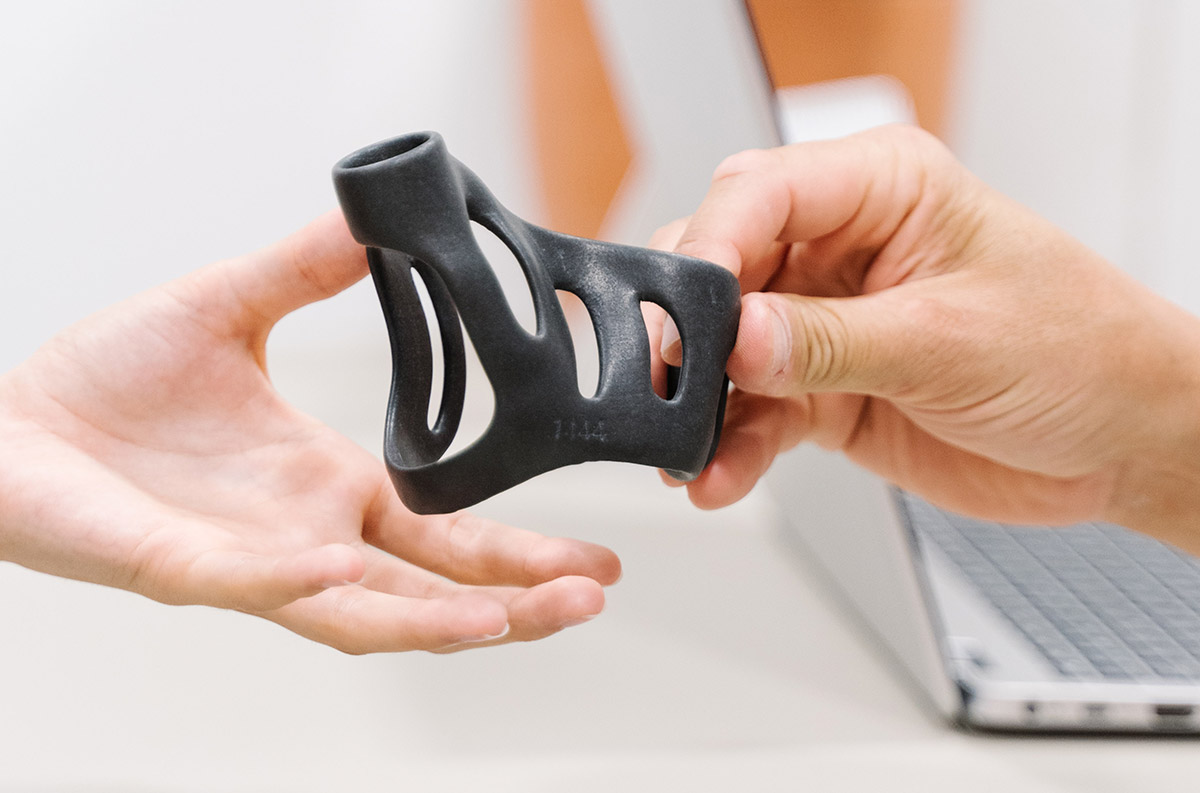Harnessing the power of technology in a changing world
We can help your business to sustainably harness the potential of technological transformation.
Contact us to discuss how we can help your businessStavros Polykarpou, Lecturer in Science, Innovation, Technology and Entrepreneurship, discusses the lessons learned from the introduction of 3D printing at a UK hospital.
15 November 2022
3D printing has gained much attention in the medical world over the last few years, thanks to its ability to improve patient anatomy visualisation and surgical outcomes.
From creating anatomical models to prosthetics, it yields various benefits such as quick customisation of medical devices that are patient-specific whilst reducing risks during operations.
Now, new research into 3D printing by UK academics is providing lessons for implementing digital technologies more widely.
3D printing is an excellent example of a hybrid technology that bridges the digital and physical domains. Innovation occurs both in the software (e.g., digital modelling of objects) and physical domains (e.g., innovation in printing techniques and materials).
In the quest for better quality and efficiency, 3D printing is already improving predictability, safety, and speed of operations. For example, surgeons use 3D printing to create patient-specific titanium plates that replace parts of patients’ skulls, rather than using traditional hand-hammered metal plates.
At the same time, any errors made in the digital modelling of patient anatomy, or any omission made during the 3D printing process, can have consequences for patient lives.
By studying the implementation of 3D printing in one UK hospital, we aimed to discover the factors involved in implementing a successful emerging technology – and what they should avoid.
The research was conducted by myself alongside Michael Barrett, Professor of Information Systems & Innovation Studies at Cambridge Judge Business School and Eivor Oborn, Professor of Healthcare Management at Warwick Business School.
We carried out a five-year study (2015-2020) of the implementation of 3D printing at a major UK hospital. The study included hundreds of detailed interviews and hours of observations.
The study followed five occupational groups as they implemented the emerging technology at different places over time.
The research is part of a broader programme examining how emerging and algorithmic technologies are organised. It aims to discover the potential organisational and societal implications of new technologies in the digital age.
We found that 3D printing develops differently depending on where it is implemented. This helps to explain:
Second, we discovered that different design combinations of digital models and their physical representations (characteristic of hybrid emerging technologies) enable new relationships between organisational spaces and outsourced innovators.
Third, we found that spaces both shape and are shaped, by emerging technologies. Interestingly, territorial disputes surrounding expertise and associated with spaces also get conferred to technology – with implications for anyone engaging with it.
Even though 3D printing holds great potential for hospitals, the study observed tensions created through workplace boundary disputes.
We concluded that there are organisational ramifications of advancements in technology, especially in the complex setting of a hospital where coordination among medical staff is critical to patient care and outcomes.
Introducing new technologies requires cooperation among occupational groups – such as surgeons, radiologists, technicians, and R&D specialists. Hospitals, in particular, have a high degree of stratification developed over many decades, and new procedures and technology can test that.
We found that the concept of space is key to the successful introduction of new technology.
By this, we mean the political production of space (power), the physical geography of space and the social experience of space, and how these constitute the organising processes.
Emerging hybrid technologies offer many possible service options, set up through different geographical arrangements, and each performs in concert with a unique spatial dynamic.
The study showed that to implement emerging technologies, focusing solely on digital components is not enough. Organisations should also consider:
If you would like to contact us to discuss potential study options, research partnerships or other collaborations then please complete the form below and we will be in touch.